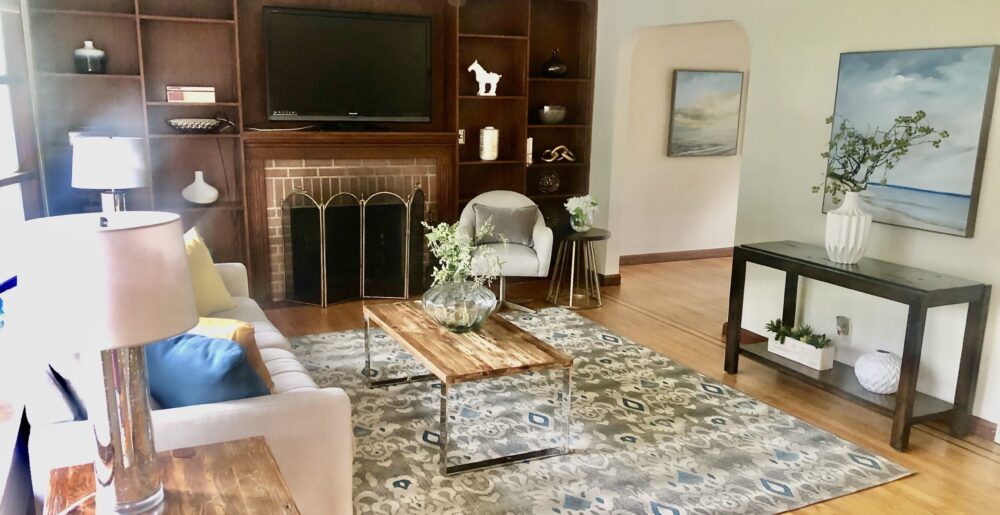Lots of people consider hiring a designer a luxury they can’t afford. But consider what happens if you choose a finish, such as countertops, backsplashes, tile or wood floors, cabinets, even paint colors that cost $1,000/room to paint, that don’t work with the color of the other finishes/furniture/fixed items like flooring in the room. Do you know how to analyze undertones in colors so that you don’t end up mixing clear with “muddy” colors? Can you choose a color scheme that will not only work together well but truly make you feel good every time you walk in — and spend time — in that room? This week, I have a client who needs me to pick a paint color to go with a green chair she has in her master bedroom — if it is a sage or olive-green, I will look for a muddy-toned complementary color, such as a beige-yellow, instead of a clear yellow that would clash with it. A kitchen design client needed me to pick a color for her very small kitchen, with existing white cabinets, rust red tile floors, and rusty red granite counters, that would fit her desire for a calm and sophisticated look. With her input, I chose Aloof Gray, a Sherwin Williams color with a slight green undertone that works well with the red.
I also stay up-to-date on trends in finishes, so I know oil-rubbed bronze light fixtures (followed by satin nickel or chrome) are popular now, as are ebony wood floors and chevron, Moroccon or Ikat fabrics and drapes. If you are an investor, knowing the trends in YOUR area are particularly important for rehabbing and staging properties that appeal to your target buyers. Spending a few hundred dollars on a consult with a stager/decorator — or a few thousand to furnish and accessorize your property — is an investment that likely more than pays itself back in a quick sale for more money.
